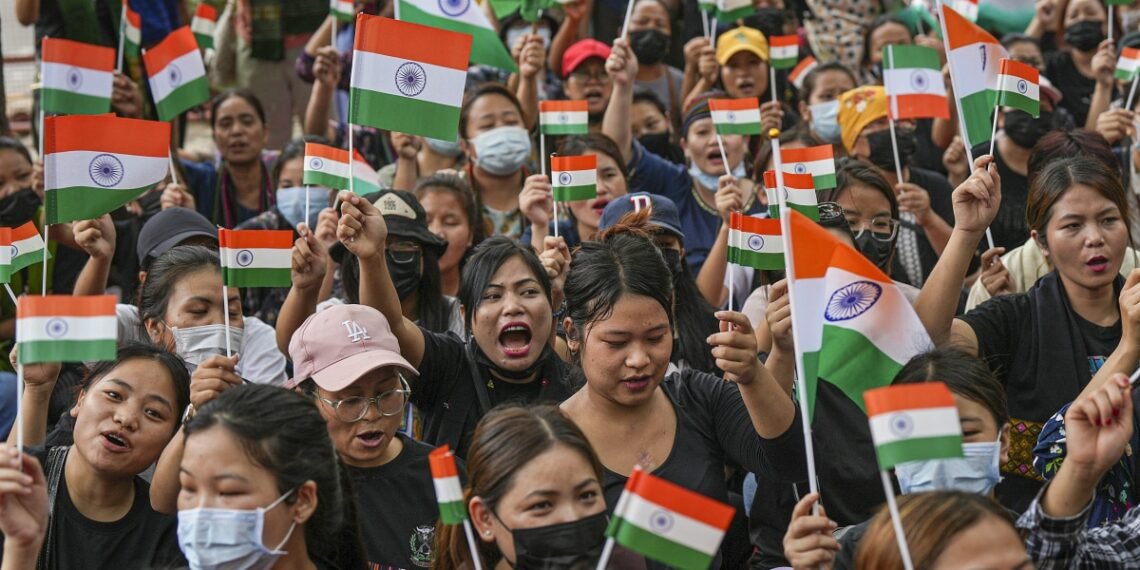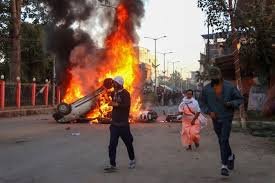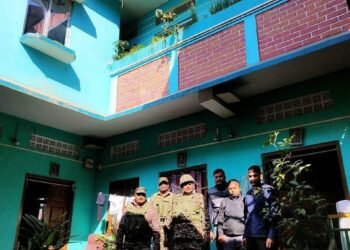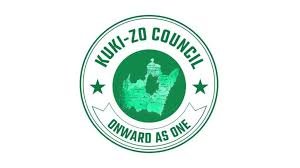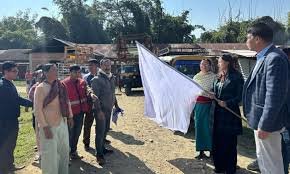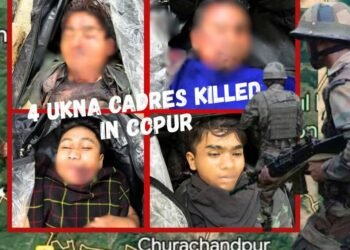Documents shared online about Kuki refugees resettled in Manipur in 1968 are being misused to suggest the entire Kuki community are outsiders. Alt News clarifies the complex history of the Kukis and their deep roots in Northeast India.
BY PC Bureau
Claims alleging that the Kuki tribe in Manipur are refugees from Myanmar, who were welcomed to the state by the Congress government in 1968 and now enjoy the upper hand due to their Scheduled Tribe (ST) status, have been widely circulated on social media. Those spreading these claims have also shared some correspondence between the then-deputy commissioner of Manipur, S C Vaish, and the state government under-secretary, Birender Singh, regarding the “re-settlement of Kuki refugees” in specific areas.
These claims have surfaced amidst a turbulent Monsoon Session of Parliament, where opposition leaders sharply criticised the Centre for failing to address ethnic clashes that have erupted in Manipur since 2023. These clashes stem from a conflict between the Meitei and Kuki communities. The northeastern state has witnessed major violence and an uneasy calm thereafter, following demands by the majority Meitei community for inclusion among the Scheduled Tribes. Although this is the latest flashpoint, the rift between the Kukis—primarily hill dwellers—and the Meiteis—valley residents—has deep roots stretching back decades. At present, Manipur is under President’s rule.
Regarding the viral claims, on July 29, 2025, a Facebook user named Hiren Hindu shared two documents alleging that the Kukis were refugees who had been given shelter in Manipur by the Congress government in 1968. This user provocatively suggested that “sheltering Rohingyas and Bangladeshis” would eventually result in them “occupying your houses, just like they did in Kashmir yesterday and are doing in Manipur today.”
Alt News found that this was not the first time such claims had gone viral. In December 2024, an X (formerly Twitter) user @jpsin1 had circulated the same documents with similar allegations targeting Congress. This user has been flagged repeatedly by Alt News for spreading communal misinformation.
Historical Background of the Kukis
The Kukis are an ethnic group inhabiting not only Manipur but also several neighbouring northeastern states such as Mizoram, Assam, and Nagaland, as well as parts of Bangladesh and Myanmar. Due to the proximity and porous borders they share with these regions, and the overlaps they have with other tribes, many Kukis have often been accused of being “outsiders” in Manipur. It is also important to note that Kukis are not a homogeneous tribe but consist of several subgroups including Aimol, Anal, Chawte, Chiru, and Kolhen, among others. The term ‘Kuki’ itself was likely assigned during British colonial rule.
Letters by a Manipur deputy commissioner from 1968 on rehabilitation of some Kukis from Myanmar have resurfaced with claims that all Kukis were refugees brought to Manipur by Congress in 1968. #AltNewsfactcheck found this misleading. @ditipujarahttps://t.co/aX9Ro8rEA6
— Alt News (@AltNews) August 9, 2025New
Their historic origins and settlement patterns during colonial India require extensive scholarly research, but historical records clearly indicate that Kukis have been part of Northeast India and modern-day Manipur for centuries.
One of the earliest documented mentions of Kukis appears in a monograph by British officer Lt. Col. John Shakespear, The Lushei Kuki Clans (published in 1912). Shakespear noted records of “Old Kukis” in Manipur dating back to the 16th century and their significant presence in the Cachar region (now in Assam) around 1800. These findings are supported by other 19th-century publications by British officials.
READ: Selective Silence? How TV Channels Muted Rahul’s Twin Attacks on ECI and BJP
Shakespear identified clans such as Aimol, Anal, Chawte, Chiru, Kolhen, Kom, Lamgang, Purum, Tikhup, and Vaiphei as Kukis inhabiting the hills around the Manipur valley. He wrote:
“In the Manipur chronicle the Chiru and Anal are mentioned as early as the middle of the sixteenth century, while the Aimol make their first appearance in 1728.”
Further, the Kukis led a rebellion against British colonial authorities between 1917 and 1919, known as the Anglo-Kuki War or Kuki Rising. This uprising was partly triggered by the forced recruitment of Kukis as laborers for World War I. Scholars Jangkhomang Guite and Thongkholal Haokip, in The Anglo-Kuki War, 1917–1919 (Routledge, 2019), describe how the conflict involved “active warfare and counterinsurgency operations” lasting over two years and resulting in widespread destruction of villages and livelihoods.
READ: Facing Heat, ECI Changes Tune on Bihar’s Voter List Revision
The Kukis were granted Scheduled Tribe status in Assam in 1950 and Tripura in 1956 under the Constitution (Scheduled Tribes) Order, 1950, further affirming their longstanding presence in the region.
All this evidence makes it clear that the Kukis inhabited the Northeast and Manipur long before 1968, contrary to what the viral social media claims suggest.
Understanding the Viral Letters
On closer inspection, the letters circulating online relate to a specific historical event. In 1967, the Burmese government launched “Operation Khadawmi,” an anti-immigrant campaign targeting non-Burmese residents. Thousands of villagers, including Kukis, were forced to flee Myanmar because they could not produce valid national identity documents. Some Kukis sought refuge in Manipur during this time.
Here I would like to post few documents of Kuki Refugees of Manipur as per requested by some Kukis in the X, if they require I would post more documents of Kuki Refugees. pic.twitter.com/hZWoSiLHrW
— Kasar Ashang (@ashang_kasar) June 5, 2025
Scholars have also suggested that many Kukis expelled from Burma in the 1960s had originally migrated there from Manipur’s northern hills in the late 1950s, amid rising Naga insurgency and the killing of several Kuki leaders.
In 2021, the Kuki National Organisation (KNO) clarified that the Indian government provided humanitarian aid to the Kukis who fled from Burma and that the viral letters were misused to claim that all Kukis in Manipur are refugees. The KNO statement to The Frontier Manipur explained:
“In 1967 during the Khadawmi operation in Burma, between Christmas and the New Year, a small population of Kukis were forced to flee to Manipur. The hapless people, treated as refugees, were given humanitarian aid by the Indian Government. Government Notification (D.O. No. B-R/67/DC/1314-6, dated June 6, 1968) to this effect was issued by the District Commissioner, Manipur. Suisa Tangkhul was the Member of Parliament from Outer Manipur at the time. The unfortunate event has been misrepresented to suggest all Kukis are refugees!”
Senior journalist from Manipur, Pradip Phanjoubam, offered further insight, explaining that while the full context of the letters remains unclear, the most plausible cause was the forced displacement during the 1967 anti-immigrant purge led by Myanmar’s military ruler Ne Win.
This indicates that the correspondence between S C Vaish and Birender Singh was likely about resettling a small group of Kuki refugees from Myanmar in Manipur’s Kongkhanthana area, not about the entire Kuki population.
In sum, the issue of migration and repatriation of some Kukis from Myanmar is complex and multifaceted. However, the sweeping claim that all Kukis in Manipur are refugees brought in by the Congress government in 1968 is false. The documents cited pertain only to a specific event involving displaced Kukis from Myanmar during the late 1960s and do not reflect the broader history or status of the Kuki community in Manipur.


